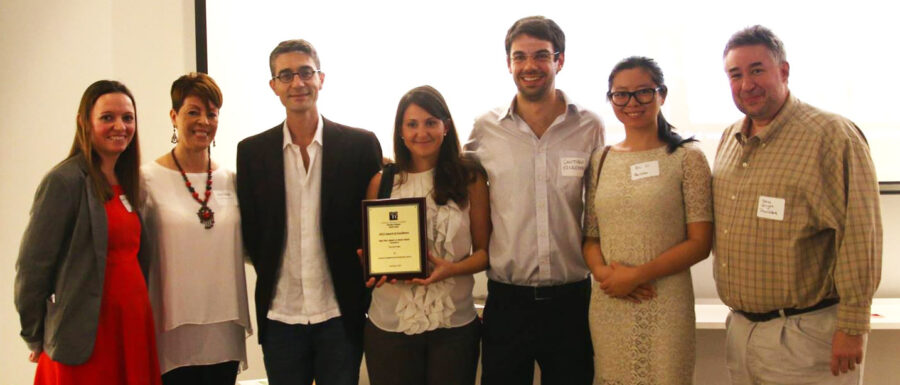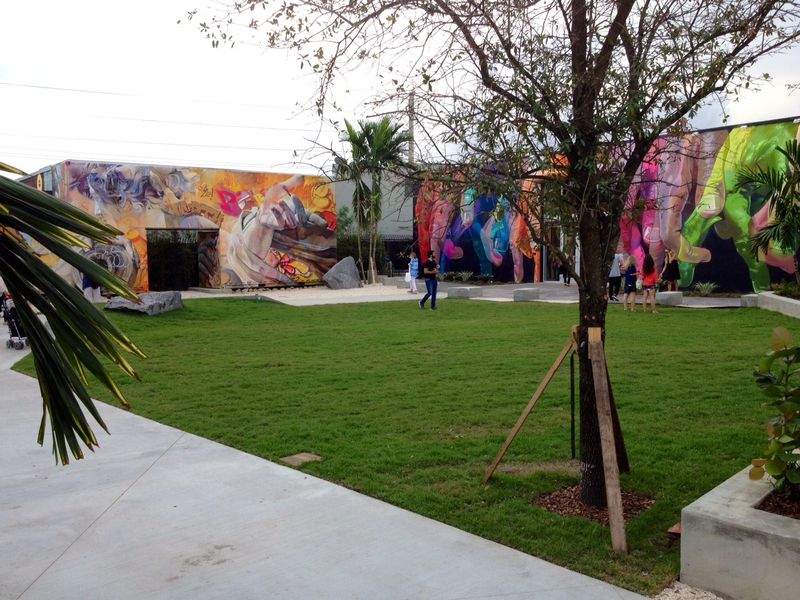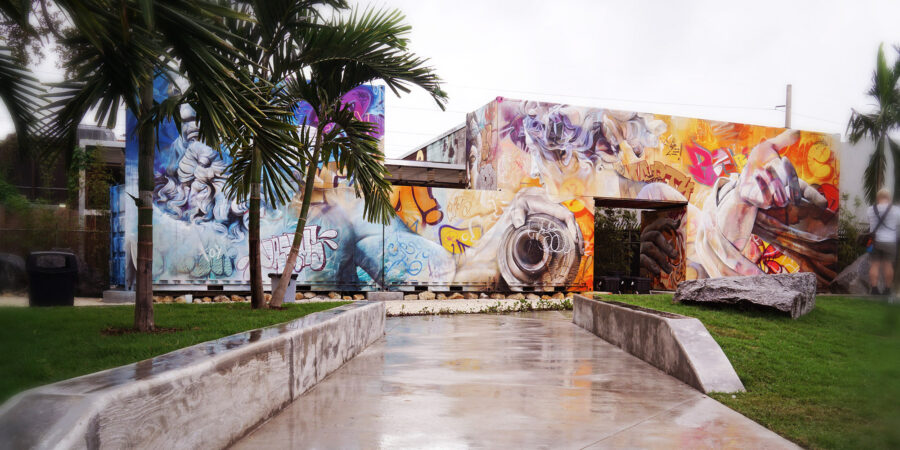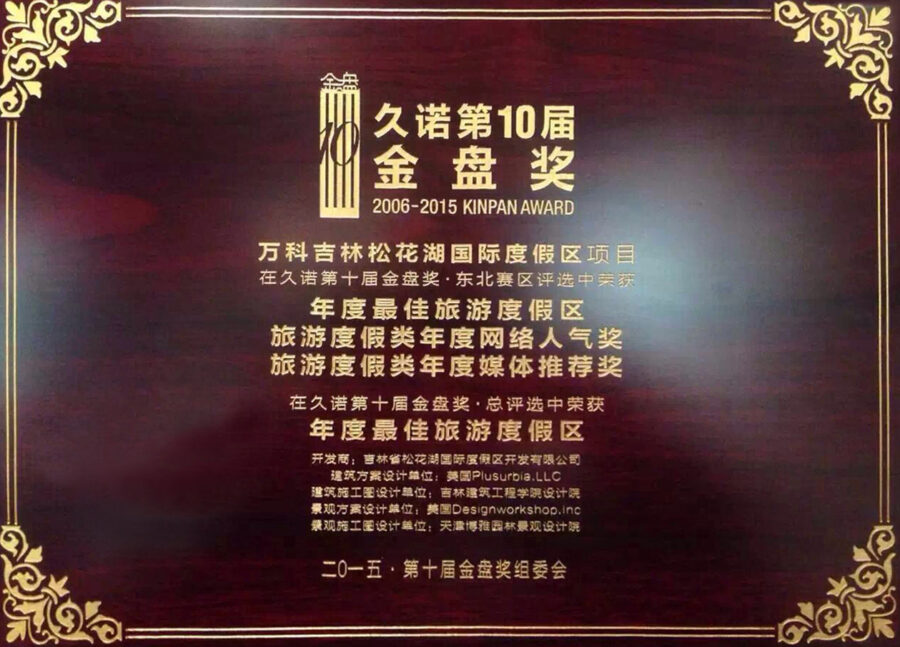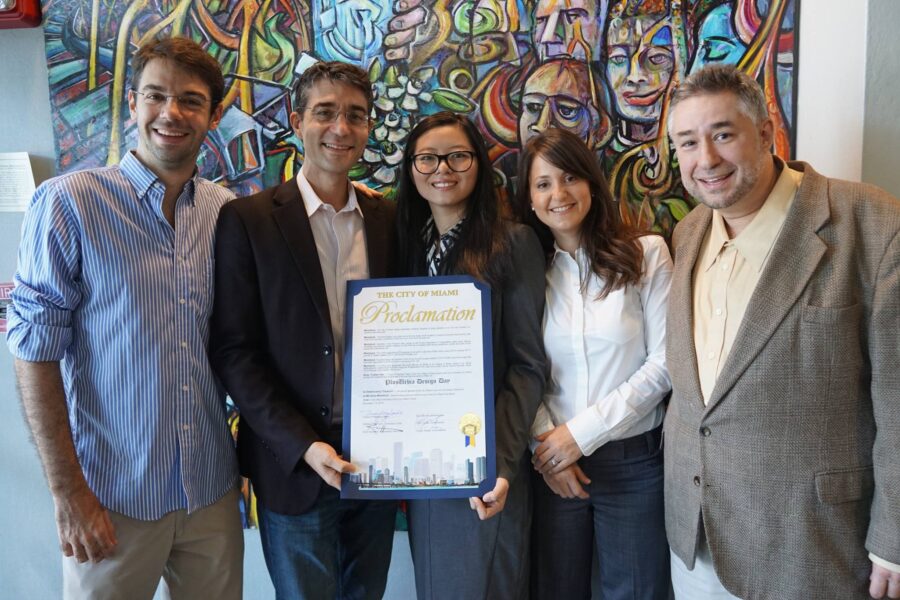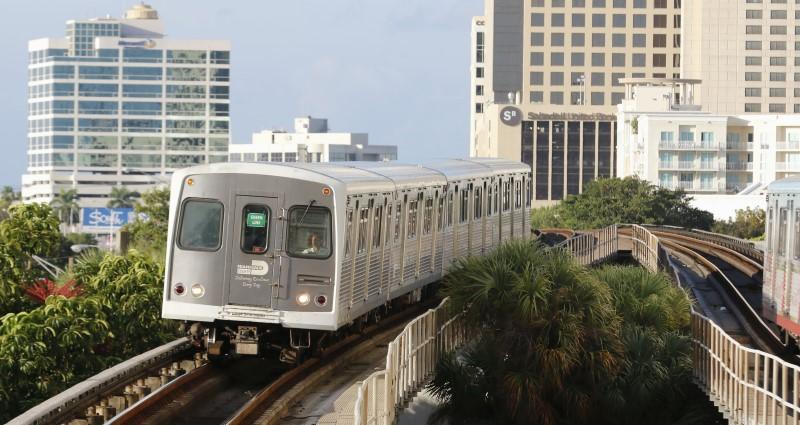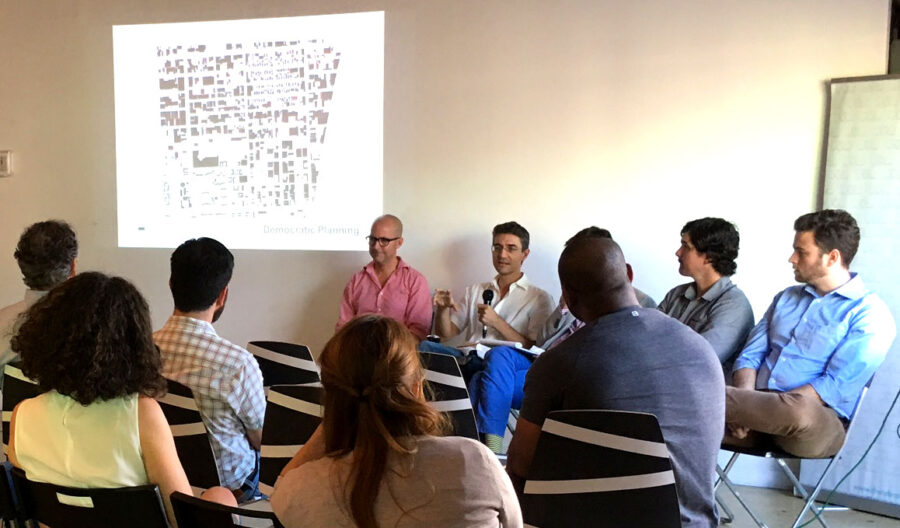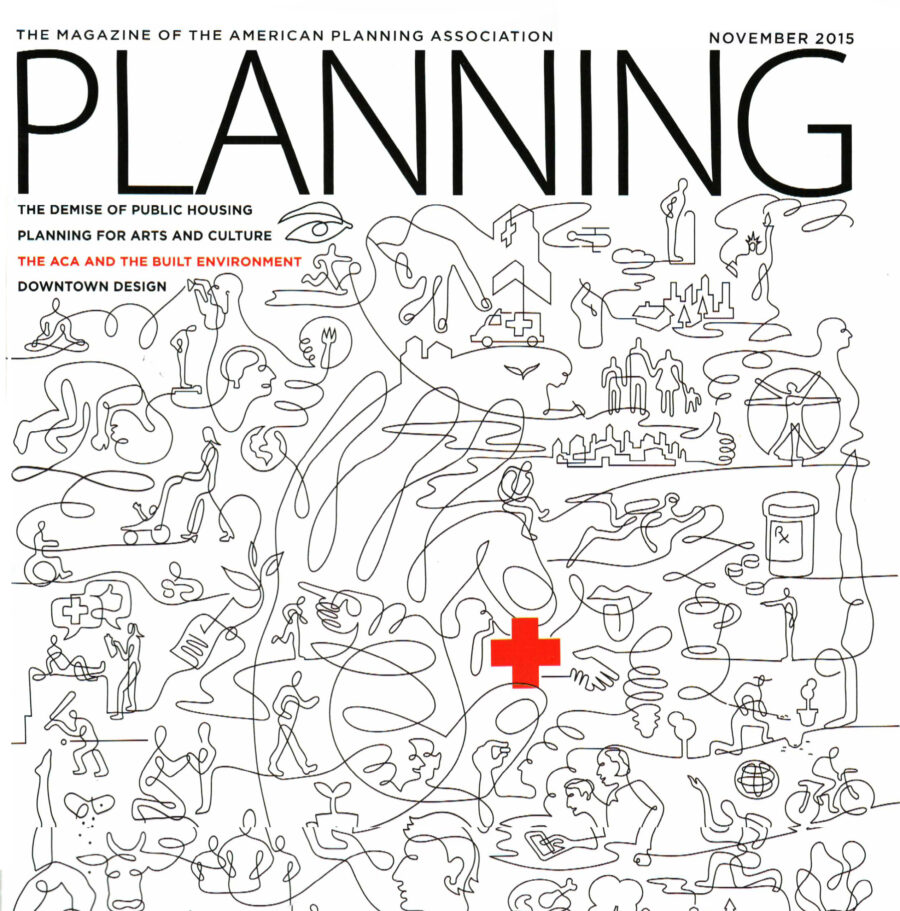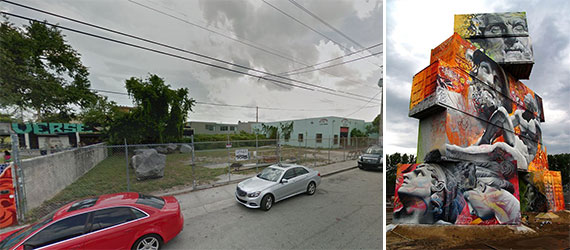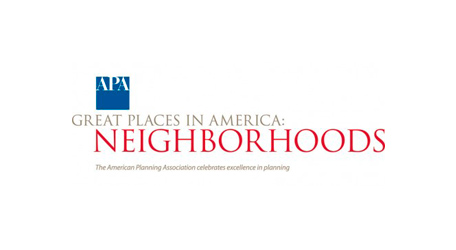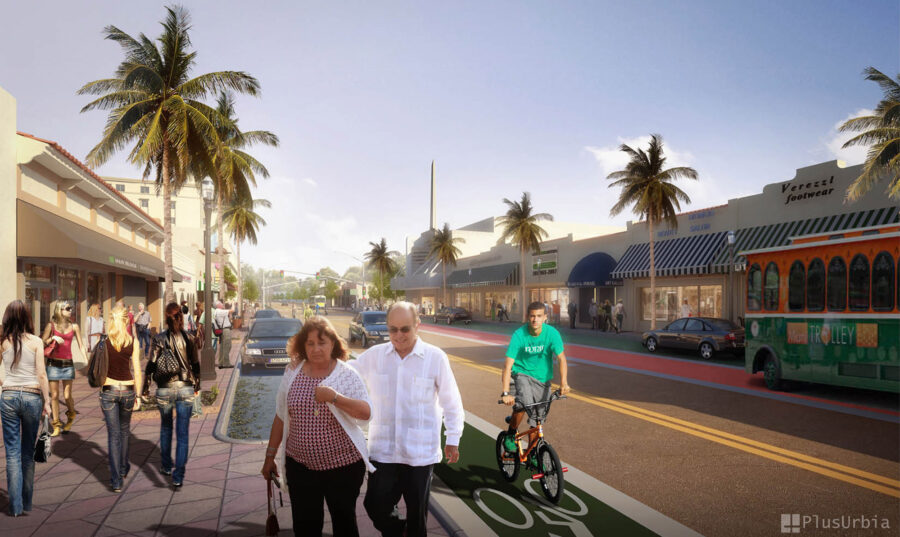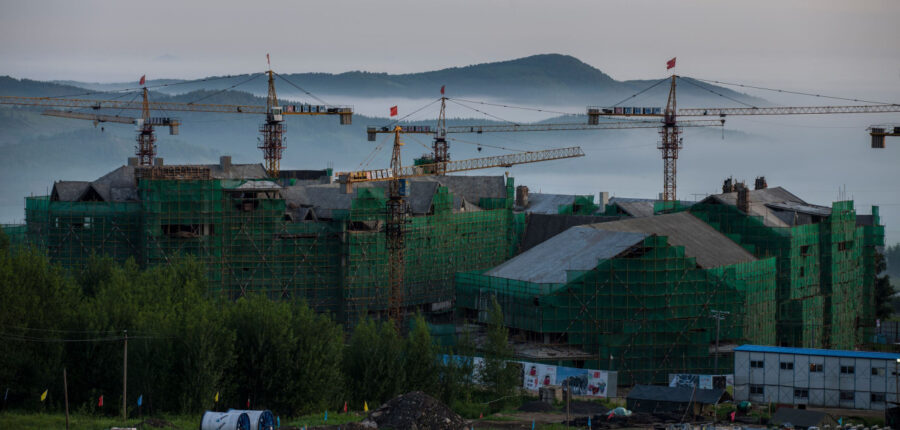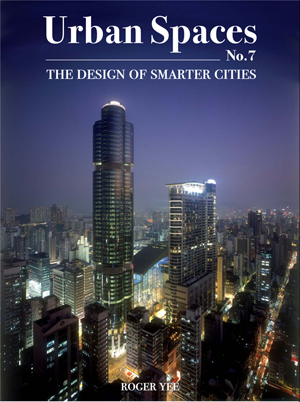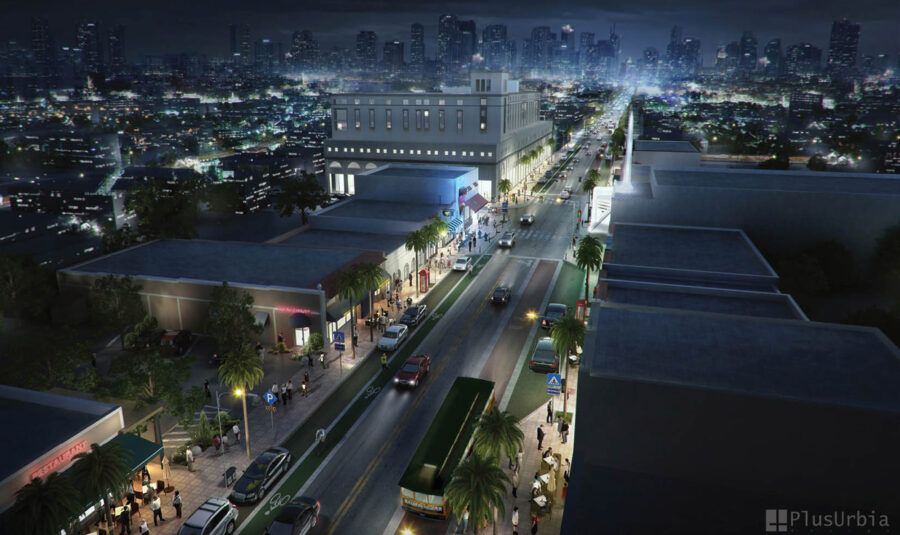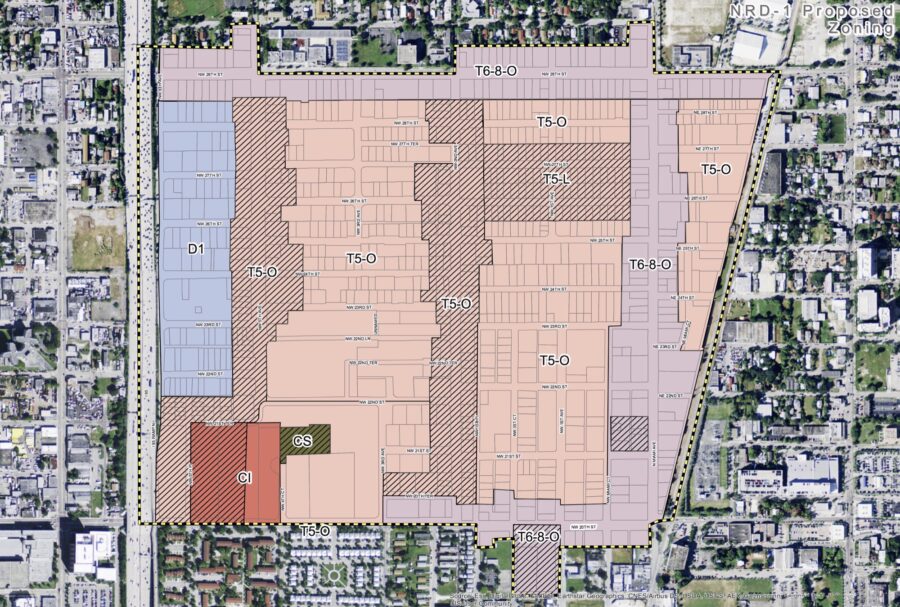our
news
AWARDS, ACCOLADES, PUBLICATIONS AND NEWS.
Are you passionate about shaping resilient, vibrant communities? Do you believe in the power of innovative, context-driven design? Plusurbia Design is looking for a creative Urban Designer to join our dynamic team.Position: Urban DesignerLocation: Miami, FLType: Full-TimeResponsibilities:Develop innovative urban design solutions for diverse projects, including master plans, community development, and public space design.
Collaborate with interdisciplinary teams to integrate planning, architecture, and landscape architecture into cohesive urban designs.
Conduct site analyses, conceptual design, and detailed design work, ensuring alignment with project goals and Plusurbia's philosophy.
Engage with communities and stakeholders to gather insights and incorporate feedback into design processes.
Prepare and present design proposals, reports, and visualizations to clients and public agencies.
Stay updated on urban design trends, zoning regulations, and sustainable practices to bring fresh ideas to projects.Required Qualifications and Skills:Bachelor’s degree in Architecture, Urban Design, or related field.
Strong portfolio demonstrating experience with urban design projects, including master plans, public spaces, and community developments.
Proficiency in design software such as AutoCAD, Adobe Creative Suite, Lumion, SketchUp, and GIS.
Excellent verbal, written, and graphic communication skills, with the ability to articulate design concepts clearly.
A passion for sustainable, resilient, and community-oriented design.
Self-motivated with good time management skills.Why Plusurbia Design?Plusurbia Design is an award-winning urban planning and design firm dedicated to creating inclusive, sustainable, and context-sensitive urban spaces. We work closely with communities, stakeholders, and local governments to deliver projects that enhance the quality of life and reflect the unique DNA of each place we touch. Our approach is rooted in the principles of placemaking, community engagement, and sustainable development.Be part of a growing, forward-thinking firm that values creativity, sustainability, and community impact.
Work on transformative projects that make a real difference in urban environments, from Regional Comprehensive plans to neighborhood and district revitalization and design.
Collaborate with a talented and passionate team in a supportive, innovative work environment.
Enjoy opportunities for professional growth and career advancement.Salary and Benefits:Salary – commensurate with experience and competitive in the marketplace.
401K ‘Elective Safe Harbor’ – Up to 3% of salary.
End-of-year performance-based bonus.
Benefits include personal days off, holidays, individual medical, dental, and vision insurance, and short—and long-term disability insurance.How to Apply:We'd love to hear from you if you're ready to contribute to meaningful urban design projects and grow with a leading firm!Send your resume, portfolio, and cover letter detailing your experience and why you’re a great fit for Plusurbia Design to careers@plusurbia.com.Applications that don't meet the requirements will be dismissed. Format the email with the subject line ‘Urban Designer Position.’
Portfolio, Resume, & Cover Letter must be in PDF format attached to the email. Deadline: Applications will be accepted until September 25th, 2024.Plusurbia Design is an equal-opportunity employer. We celebrate diversity and are committed to creating an inclusive environment for all employees.Join us in shaping the cities of tomorrow—today!
Written by John Charles RobbinsOf all the legislative changes made this year designed to encourage the continued evolution of the Wynwood Arts District, one item remained in limbo for months.After fine-tuning and tweaking and re-tweaking, Miami city commissioners in December finally adopted an ordinance creating a new public benefits trust fund devoted entirely to the booming neighborhood north of Northwest 20th Street.What is the most significant outcome of the delay? The final version will require annual allocation of at least 35% of the money in the trust toward affordable and workforce housing.Much of Wynwood is in District Five, represented by Commissioner Keon Hardemon, and he fought for the changes – particularly setting aside a larger share of the new fund for affordable housing in a city that has little.In July, commissioners approved the start of a process to expand the boundaries of the Wynwood Business Improvement District, or BID, and gave preliminary approval to a handful of ordinances to provide new tools to the booming area east of I-95, including land use and zoning changes.And the commission approved on first reading the Wynwood Neighborhood Revitalization District Plan.The first of its kind in the city, the plan’s new zoning regulations for Wynwood are designed to encourage new, mixed-use residential and office developments, create dedicated funding for neighborhood improvements, promote pedestrian-focused activated streets and preserve the area’s unique artistic and industrial character.Commissioned by the Wynwood BID, the plan was developed by planning firm PlusUrbia in conjunction with the improvement district and the City of Miami’s Planning Department. Supporters have referred to the plan as Wynwood 2.0.Final approvals came from commissioners in September, with a few modifications. However, the proposal to create a public benefits trust fund and a body to oversee the funds was deferred at the urging of Mr. Hardemon.City planners were directed to rewrite the enabling legislation.At the December meeting, Mr. Hardemon said he still wasn’t satisfied with the wording. The item was again deferred to later in the day for final modifications.Planning Director Francisco Garcia later said that staffers sat down with stakeholders to author a “better” ordinance.Commission chairman Wifredo “Willy” Gort spoke in favor of offering incentives to developers that will lead to more affordable housing.“It can be done. We need to start mixing housing,” said Mr. Gort.“As Wynwood is growing, it should have a mix,” Commissioner Francis Suarez said.Along with increasing the percentage of money earmarked for affordable housing, the final version of the ordinance built in more city commission oversight and control of the fund.Mr. Hardemon said the final version was “more palatable.” The ordinance was adopted unanimously.Steve Wernick, representing the business improvement district, told commissioners this involves a brand new revenue stream that will be spent to make public improvements. He said improvement district members have “a strong commitment to invest in the public realm.”The legislative changes in large part are designed to encourage further transformation of Wynwood from a non-descript manufacturing and warehouse area into a colorful and thriving neighborhood of galleries, shops, restaurants and pubs while nurturing a street art scene that has gained international attention.The overall redevelopment plan promotes inclusion of murals and glass on new buildings, creates financial incentives for low-rise buildings, and reduces allowable heights for most new buildings to eight stories. It also encourages pedestrian walkways and open spaces, green roofs, parks and increased shade.Instead of calling the new plan the “Wynwood Neighborhood Revitalization District Plan,” commissioners followed Mr. Hardemon’s recommendation to change the name to Neighborhood Revitalization District-1 or NRD-1.The moniker is referred to in the final ordinance creating the public benefits trust fund.The legislation notes that “unique conditions exist within the boundaries of the NRD-1 including a lack of parks, open space and civic space and a lack of public land that is available to be developed or dedicated by the city for such purposes … and the city seeks to encourage reinvestment in infrastructure and seeks other creative solutions to create parks, open space, civic space, and civil support uses to allow for and facilitate new residential uses within the NRD-1 boundaries.”It’s intended that the public benefits trust fund be established “in order to collect the cash contributions made according to the Miami 21 Code … to supplement affordable/workforce housing, public parks and open space, and green building certification shortfalls,” the legislation says.The Wynwood Business Improvement District, through a five-member committee, will allocate money in the fund within the NRD-1 boundaries.The committee will be made up of one member directly appointed by the commissioner from District Five, one member appointed by the commissioner from District Two, one member appointed by the full city commission, and two members appointed by the improvement district’s board and submitted to the city commission for confirmation.The committee must report to the commission annually, and the trust fund is to be reviewed by the commission every three years.The business improvement district formed in 2013 as a city municipal board. Its directors are drawn from the hundreds of property owners throughout the 50-block community. The improvement district works to enhance security and sanitation services, raise awareness of advancements and plan for the future of Wynwood.A planning staff report on the revitalization district says: “Wynwood is transitioning into a globally-recognized destination for art, fashion, innovation, and creative enterprise. It is vital that the Wynwood Arts District accommodate new uses and development while creating new public and private open space opportunities for its existing and future residents.”The revitalization district is to establish protective regulations to guide the transition from an industrial district into a diverse, mixed-use area to include industrial, retail and residential components, the report says.“The neighborhood revitalization district regulations will also preserve the unique street art and industrial characteristics of the current Wynwood Arts District while promoting an environment where people work, live, and play,” it says.Although many of the components of Wynwood 2.0 were approved, the boundaries ultimately did not expand. News link: http://www.miamitodaynews.com/2015/12/29/wynwood-fund-workforce-housing/
Wynwood Neighborhood Revitalization District – a warehouse zone transformed into a premier arts district MIAMI - PlusUrbia Design -- collaborating with the Wynwood Business Improvement District (BID), City of Miami Planning and Zoning Department, and Akerman law firm – has been honored by the American Planning Association (APA) for creating the Wynwood Neighborhood Revitalizaiton District.The Coconut Grove-based studio’s vision for the renowned arts district received the Gold Coast Section, Florida Chapter’s 2015 Planning Award in the category of Best Plan, Report or Study. The innovative NRD plan, crafted in collaboration with the City of Miami, the Wynwood BID and Akerman Law supports Wynwood’s creative industries, with mixed-use development, walkable streets, transit corridors and open space."The Wynwood NRD is proof that government and the private sector can work together to create great things. The plan’s strength is that it gives equal standing to all stakeholder interests. Collaboration guided this transformation of Wynwood into a 24-hour, multi-purpose, mixed-use center for the arts. Our team is gratified to be honored -- along with our partners – by the American Planning Association,” – Maria Bendfeldt, of PlusUrbia.The Wynwood NRD creates more residential development while also allowing for smaller units to serve millenials and artists with affordable apartments and live-work units. To preserve the light industry among the hip galleries, the PlusUrbia team created a Transfer of Development Rights program that allows warehouse owners to sell the development rights to their buildings – so development pressures do not encroach on the legacy businesses.The Miami City Commission recently adopted the NRD. Wynwood, based on the collaborative NRD, was one of only four places in America recognized by the national APA in 2015 as one of America’s Great Places: Neighborhoods.
The Goldman family just expanded the murals project onto a vacant, nearly half-acre property next door and turned it into an enclosed, landscaped garden designed by a prize-winning Coconut Grove firm, PlusUrbia.And while the opening was timed for Miami Art Week, the good news for locals is they get to enjoy it year-round.The garden features four new murals in Wynwood Walls' recently completed "Walls of Change" installation. One of the new murals is painted on the side of a stacked set of shipping containers, another on the side of a warehouse that opens onto the new garden. During this week, the warehouse is serving as a studio for artist Peter Tunney's newest endeavor, taking really big Polaroid portraits using a giant vintage Polaroid camera from the '70s.But the garden is not just a canvas for art. Goldman Properties and PlusUrbia say the garden provides "urban relief" for the rapidly evolving Wynwood industrial district -- which, given its origins, never had any parks or green spaces other than vacant lots.PlusUrbia's Santiago Eliaschev says the garden was designed to give visitors different vantage points from which to view the murals, including angled benches and sloping planters that also provide seating -- perfect, the firm boasts, for "Wynwood selfies."If the firm name sounds familiar, that's because it's also responsible for the new Wynwood zoning plan that's meant to spur housing development and improve streets and sidewalks in the neighborhood while preserving its distinctive warehouses and funky vibe.The PlusUrbia Wynwood Neighborhood Revitalization District plan recently won the American Planning Association's 215 Great Neighborhoods award.The new garden is immediately west of Wynwood Doors, the Walls project's last expansion.ANDRES VIGLUCCIPosted by Miami Herald at 06:47 PM | Permalink
MIAMI - PlusUrbia Design, in collaboration with Goldman Properties, designed the first major urban open space in the heart of Wynwood since the Miami-based studio’s award-winning Wynwood Revitalization District was enacted by the Miami City Commission. Wynwood Walls Garden will create a new gathering and art space on 0.43 acres adjacent to Goldman’s already world famous Wynwood Walls and Wynwood Doors.PlusUrbia designed the space, which transforms vacant land at 260 Northwest 26th Street, to invite the visitors to immerse themselves in artistic expression. The Garden’s design serves to enable the display of great street art by incorporating sight lines that allow visitors to experience murals from various vantage points. The angled benches, sloping planters and other elements create a perfect stage for artistic Wynwood "selfies.""PlusUrbia worked to transition Wynwood from a neglected warehouse district to 24-hour, multi-purpose, mixed-use center for the arts. As a warehouse district, Wynwood had no open or green spaces. We are thrilled to be working with the Goldman Family – which once again has improved the livability and human scale of the district by providing a much-needed urban relief with a welcoming dynamic, artful space.” – Santiago Eliaschev, of PlusUrbia.Wynwood Walls Garden has opened for Art Basel Miami. The artistic garden will remain open after Basel, providing an oasis in the heart of the thriving mixed use Arts District. The Garden, a showcase for the Walls of Change installation, features repurposed shipping containers, planters that also provide seating, artistic concrete and a natural textures.PlusUrbia Design’s Wynwood Neighborhood Revitalization District recently earned the American Planning Association’s 2015 Great Neighborhoods Award. The innovative plan supports Wynwood’s creative industries, with mixed-use development, walkable streets, transit corridors and open space. Goldman’s Wynwood Walls Garden is the fruition of the NRD’s intent to add open space to the world-renown arts District -- born of former industrial zone that had none. Click here for more project info and images: https://plusurbia.com/project/wynwood-garden/
PlusUrbia Design has been honored with the 10th annual KINPAN award as the architectural design team for the Songhua Lake Ski Resort. The Coconut Grove-based studio was the designer of the development named Best Resort and Most Popular Resort Award in China. Organized by Times House magazine and The Architectural Society of China’s Habitat Environment Committee, the Kinpan Awards are among the most influential property design award programs in China. Projects are selected based on quality, aesthetics, habitat environment and value.From the Plaque:The 10th Annual KINPAN award (one of the biggest awards in China for real estate development field)Songhua Lake Ski Resort won Best Resort, Most Popular Resort Award in China.Annual Best Resort in ChinaDevelopment Team: Jilin Songhua international ski resort development companyArchitecture Design Team: Plusurbia Design in U.S.Construction Document Team: Jilin Architecture construction college architecture firmLandscape Design Team: Designworkshop Inc in U.S.Construction Document for Landscape Team: Tianjin Boya landscape design firm
The City of Miami presented a proclamation on Thursday Nov. 19 honoring PlusUrbia Design for hosting the My Calle 8 Forum and contributing 500-plus hours of pro bono services. The Coconut Grove-based studio's entire team produced sample drawings of Calle Ocho as a Complete Street that serves pedestrians, cyclists and public transit equally with automobiles. PlusUrbia’s vision of calmed, two-way traffic with wide sidewalks captured the imagination of the media, drawing coverage in print, on television, radio, web sites and social media.Link to the City of Miami complete Meeting Agenda: http://egov.ci.miami.fl.us/meetings/2015/11/2848_A_City_Commission_15-11-19_Meeting_Agenda_%28Long%29.pdf
MIAMI | BY DAVID ADAMS AND ZACHARY FAGENSONWith little land left to build on between the Everglades and the Atlantic Ocean, Miami developers are going vertical, converting the city from a sprawling suburbia to a dense metropolis.Dazzling luxury condo towers designed by top architects highlight what some have called the "Manhattanization of Miami." But with the glamor come mounting traffic woes, and politicians and residents are scrambling for long-neglected mass transit solutions.Miami has risen to between 7th and 12th on two U.S. indexes for worst traffic congestion. The city has one of the least-developed mass transit systems among the world's major metropolitan areas.Gridlock could tarnish the gloss on Miami's image and hurt efforts to lure new residents and companies to its sunny shores, civic leaders fear. They warn that without swift action, such as an expanded Metrorail system, rapid bus lanes and trolleys, people may find themselves trapped in their fancy pads.Imagine the nightmare, says Seth Gordon, a Miami publicist: "You just bought an apartment, the view is to die for and the amenities are wonderful, but you can't get out."Downtown Miami had 80,750 residents in 2014, double its population in 2000. On weekdays, the number of people in the city center surpasses 222,000.It is poised to get more crowded as the massive $1.05 billion Brickell City Center nears completion, with a shopping mall, two office towers, almost 900 apartments and a hotel. Just to the north, the $1.7 billion Miami Worldcenter is under development, including a 765,000-square-foot mall, an 1,800-room hotel, and a 60-story condominium tower.Exacerbating the traffic problem is a lack of affordable housing in the city center, forcing many to commute from the suburbs of Miami-Dade County, with a population of 2.6 million residents across 2,400 square miles.Since the market revived in 2011, 239 new condo towers with 33,738 units have been proposed or are under construction in Miami-Dade County, according to Peter Zalewski of Miami-based real estate consultant Condo Vultures.WATER BUSES AND BIKE TRAILSMass transit advocates say Miami has a lot of work to do.The city's bus system is notoriously inefficient. Its Metrorail was only recently extended from downtown to the Miami airport, one of the busiest in the country. There is no rail link from the airport to the biggest tourist attraction, Miami Beach, or the downtown port of Miami which handles 5 million cruise ship passengers a year.A public outcry over traffic congestion has prompted officials to look for ways to create an interconnected mass transit network, including dedicated rapid bus transit lanes, city trolleys, bike trails and even water buses."For decades we promoted a lifestyle of freedom of mobility that relied on the car and now the chickens are coming home to roost," said Miami-Dade County Commissioner Esteban Bovo.Most agree that Miami's roads are maxed out. Still, expansion of the Metrorail at $100-200 million per mile would take years, and funding it would likely require private venture capital.A five-day "green mobility" event this week called WHEELS is promoting hybrid solutions combining bus, rail and bike trails, with low-cost taxi services such as Uber and Lyft filling the gaps."Young professionals today want to live in urban areas and look less to cars," said Juan Mullerat, an architect and urban planner with PlusUrbia Design.Over the past five years, the long under-utilized Metrorail has increased annual ridership by 24 percent, local officials said."It saves me time and it saves me money," said Arlen Polanco, 36, a nurse who rides Metrorail to work because the journey by car had become unbearable.Civic activist Norman Braman, owner of Miami's largest car dealership, urges smarter traffic light synchronization that can read real-time congestion, along with steps such as Venice-style vaporettos or water buses."The water is already there, we don't have to wait 10 to 15 years to build a rail system," he said.Braman, a major financial backer of U.S. Senator Marco Rubio's 2016 Republican presidential campaign, has led local efforts to defeat mass transit taxes over the last two decades. He has argued that the public sector cannot be trusted to spend the money efficiently to fix the problem.Undeterred, local authorities are stepping up future plans through a $2 billion bond issue, including money for new diesel-electric buses equipped with Wi-Fi and a new mobile app to track buses.New ordinances also allow downtown developers to build fewer parking spaces in new buildings to encourage a "rider-transit" culture. A recent project by Related Group, one of Miami's largest real estate firms, offered 40 studios downtown with no parking."People want urbanization," said Carlos Rosso, the firm's president. "I happen to own one and I rent it out without problem."(Writing by David Adams; editing by Colleen Jenkins and David Gregorio) News link: http://www.reuters.com/article/2015/11/12/us-miami-traffic-idUSKCN0T12F620151112
By PlusUrbia Design //From the beginning of urbanized America, streets functioned to provide mobility in many ways:People walked to work, trolley, horse-drawn then powered moved workers from factories and offices to home. Trains played a role in commutes. Bicycles incited a pedal power mobility craze for a while.Then the automobile came along.By the 1950s, roads became the sole domain of automobilesThe automotive industry even created the term “jay walking” and launched a campaign to demonize people on foot.Sidewalks shrunk and beautifully landscaped medians were torn out to create more lanes for automobiles.Trolley lines were ripped out and replaced with buses. But buses were devalued and branded as last ditch transportation for the unfortunate. Only the sedan was fit for the upwardly mobile middle class American.Crosswalks were diminished. Those brazen enough to move around on two feet were seen as merely an impediment to moving more cars faster.Government loans encouraged suburban single family homebuilding, giving rise to the super highway, and when highways weren’t enough, surface streets – even the most picturesque and historic – were overhauled to turn them into another layer of de facto highways.After a half century of destroying hundreds of urban corridors for the sake of the almighty automobile, sanity started to creep bank into the minds of elected officials, town planners and constituents.Milwaukee, San Francisco and other major cities razed elevated highways that had torn apart their urban fabric. Boston paid billions to put its in-town highway underground, with acres of urban park space and connectivity built above.Miami, which consistently/tragically ranks near the top of annual lists of the most deadly cities for pedestrians in America, is slow to offer options for pedestrians, bicyclists, public transit riders, wheelchair users and others who do not wish to be beholden the automobile.Construction for I-95 tore apart the city’s historic community. Car dependence reigns supreme despite tens of thousands of dwelling units being built in what should be a walkable urban core. Because Miami grew up in the car age, its commute times are among the longest in America.Something has to give.Miami’s PlusUrbia Design, a design practice dedicated to creating better places, is trying to undo car culture chaos in its hometown. The studio, known for its acclaimed Wynwood Neighborhood Revitalization District plan, is working to save Miami’s best-known street.Calle Ocho, the heart of Little Havana, functions as a high-speed highway into Downtown Miami and Brickell, its financial district. Two PlusUrbia team members, who each live in historic homes just blocks from Calle Ocho, have dubbed the dangerous road “Highway Ocho.”For half a century, Calle Ocho (SW 8th Street) has served as an eastbound speedway for commuters, along with the equally dangerous one-way, three-lane, westbound SW 7thStreet. It is time to make streets for the people, not simply for cars.Originally a two-way typical American main street, Calle 8 was transformed in the late 60s into commuter highway. A few years later, the nearby Dolphin Expressway (I-836) was completed.Despite the opening of an elevated east-west speedway into downtown, Calle Ocho’s prime stretch between 27th Avenue and I-95 was never converted back into the quaint main commercial core of Little Havana.Plusurbia Design proposes to turn Calle 8 back to its original, main street self. The firm’s calmed traffic and wider sidewalks would reverse 50 years of degraded neighborhoods and commerce left in the wake of a corridor turned freeway.PlusUrbia advocates for Calle Ocho as a destination, not as a pass-through corridor scarring one of the oldest, most authentic neighborhoods left in Miami.The Florida Department of Transportation is currently studying the SW 7th and SW 8th Street corridors. Early Little Havana community meetings have shared FDOT scenarios that seem to be more concerned with vehicle movement than people movement.By early 2016, the state transportation agency will pick a team of consultants to conduct a $2 million study and redesign of the corridor. PlusUrbia, which has committed 500 staff hours to its pro-bono redesign effort, was approached by major engineering firms to serve as a consultant for the SW 7th and SW 8th project. However, the studio has turned down those opportunities to better serve the public interest.PlusUrbia, with strong ties to Little Havana, wants to unlock Calle 8’s potential by proposing the restoration of the original two-way traffic. The Miami-based urban design firm has created images of a 21st century Calle Ocho with multimodal transportation alternatives such as dedicated bike and transit lanes, comfortable wide sidewalks and additional safe crosswalks in a vibrant urban setting. More than 100 Little Havana stakeholders attended PlusUrbia’s October forum to share a vision for a better Calle Ocho. A diverse group of urban and transportation design experts worked interactively with the audience to empower the growing grass roots movement for calmed traffic and a better pedestrian experience on SW 7th and SW 8th streets. The overwhelming opinion of those in attendance, including three elected officials, is that Calle Ocho and SW 7th must be Complete Streets that serve pedestrians, cyclists and public transit equally with automobiles.PlusUrbia’s designers firmly believe Calle 8 should be for all Miamians to enjoy, not only to drive through. Its pro-bono effort believes popular opinion will rescue SW 8th Street from half a century of destruction as “Highway Ocho”.From its office, on a bike lane footsteps from a commuter train station, PlusUrbia hopes to export its Calle Ocho campaign nationwide. The firm believes democratic streets – that treat pedestrians, cyclists, transit riders and automobiles equally – will benefit every urban corridor in America: from the subtropics to Main Street USA. The studio’s work on the Wynwood Neighborhood Revitalization District earned the American Planning Association’s 2015 America’s Great Places Award. The entire staff of Miami-based boutique urban and architectural design firm is contributing to the landmark Calle Ocho complete streets visioning effort. PlusUrbia Founder Juan Mullerat and storyteller Steve Wright both live blocks from Miami’s Calle Ocho. Both have first-hand knowledge of the dangers of an urban corridor turned into a highway. Wright’s wife uses a wheelchair for mobility and Mullerat has two young daughters in strollers. Wright is a regular contributor to CEOs for Cities and other urban blogs. Mullerat, Assoc. AIA, APA, NCI, CNU, is an award-wining urban designer who has created walkable neighborhoods around the world. Link: https://ceosforcities.org/2015/11/the-case-against-urban-corridors-that-act-like-high-speed-highways/
Planning on the groundBy Christine KreylingNovember 4, 2015Every community has its own history and character, physical fabric, and socioeconomic issues. The CMAP toolkit presents techniques that mean communities aren't reinventing the wheel in their arts and culture planning. But putting a plan on the ground requires a nuanced approach tailored to the context.Colorado's recently announced initiative in affordable housing and workspace for artists and arts organizations, for instance, is geared to the state's rural areas, where the economy has weakened because of declines in agricultural exports and crop, livestock, and energy prices. Nashville's Metropolitan Development and Housing Agency, on the other hand, constructed Ryman Lofts in 2013 — a $5.5 million, 60-unit, artist-preference affordable rental housing block — on the edge of a booming downtown where land values and rents are soaring.Then there's Wynwood. This 205-acre, 50-city-block area in Miami's urban core was in the last century the city's garment district and an enclave for Caribbean immigrants. A decade of business exodus left behind a surplus of vacant factories and warehouses. Their windowless concrete walls became the canvases for spontaneous "street art" that attracted artists from all over to create their own installations. The art magnetized developers, who acquired dilapidated properties that became galleries, performance spaces, creative offices, restaurants, cafes, and other adaptive reuses.To take Wynwood to the next level, the city-chartered Wynwood Business Improvement District commissioned PlusUrbia Design to craft a comprehensive zoning plan as well as redevelopment guidelines for what is now the Wynwood Neighborhood Revitalization District. While the plan and guidelines contain many elements typical of current urban design practice, a central intent is the preservation and enrichment of the street art culture that instigated the neighborhood's renaissance.To preserve mural walls and encourage new infill receptive to street art, the plan creates a transfer of development rights program that allows warehouse owners and infill developers to sell their air rights, reducing the pressure for over-scale development.Zoning changes focus on allowing more residential development, in particular micro-units and live/work spaces to preserve affordability. The zoning revisions also permit artisan manufacturing, including the breweries, distilleries, and coffee roasting facilities that were nonconforming under the old code, with an attached retail component.Another gesture toward affordability is the reduction of on-site parking requirements, which also enables development more suitable to Wynwood's often small lots. To discourage gaps in street walls made by surface parking, the plan creates a system for developers to pay into a fund to build centralized garages. And if property owners want to boost their allowable density, they can contribute to a fund dedicated to parks, open space, and other infrastructure improvements within Wynwood's boundaries. A design review board composed of Wynwood stakeholders will advise the city's planners on the compatibility of new development.Pedestrian ambiance is enhanced by a sidewalk width expansion from five to 10 feet in new developments, with public cut-throughs called paseos to break up long blocks. A street-calming device is the introduction into alleys of woonerfs, the Dutch-derived, curbless streets that intermingle vehicular and pedestrian traffic on surfaces such as cobblestones that promote slow driving.When asked if he thought his firm's recipe for Wynwood could serve as a model for other cities, PlusUrbia's Juan Mullerat laughs. "I don't know if I'd dare apply to another city what we've done in Wynwood. It was a very bottom-up process instigated by Wynwood property owners and very labor intensive. We listened to anyone who had an idea about what should happen, did research lot by lot. Plus, Wynwood is a pretty unique place."Christine Kreyling is the author of The Plan of Nashville and coauthor of the recently released Shaping the Healthy Community: The Nashville Plan. She lives in Nashville, Tennessee, and The Sea Ranch, California. Click here to read the full article.
Art installation will include murals painted on shipping containersOctober 27, 2015 05:00PMBy Sean Stewart-MunizGoldman Properties is gearing up to open its newest art venue in time for Art Basel, right next to the Wynwood Doors.In August, Goldman paid $12 million to acquire the Wynwood Doors, an art installation adjacent to the Wynwood Walls at 2516 Northwest Second Avenue. Included in that sale were two connected properties, one of which is vacant land and the other a small industrial building.Now, the real estate company has announced plans to transform both properties into a new art space called the Wynwood Walls Garden, which will debut December 1 with pieces from six different artists. The industrial building’s walls will be used as more canvas space in the short term, with a restaurant or retail tenant planned in the future.“We’re addicted to art,” Jessica Goldman Srebnick, CEO of Goldman Properties, told The Real Deal. “It’s so important to incorporate interesting elements into real estate, and for us, art is something we’ve always incorporated into our projects over the course of the last 47 years.”Together, the two adjacent properties Goldman acquired total roughly 0.43 acres. The vacant land, at 260 Northwest 26th Street, is a small grassy lot that currently houses a handful of decorative boulders similar to the ones placed in the Wynwood Doors.For its transformation, Goldman plans to install four to five shipping containers stacked on top of each other with large murals painted on their sides. The company also hired PlusUrbia, a local design group, to completely alter the lot’s landscaping with deck space, along with concrete and sand areas.The unifying theme for the new space and the 14 murals in Goldman’s Art Basel program is “Walls of Change.” She said the idea is that art is a force of change, especially for a community.“There is nothing better that describes what’s happening in Wynwood,” she said.Pichi & Avo, a pair of Spanish artists that frequently juxtapose Greek Gods with graffiti, will create large murals on the closed containers.In addition, two other artists will paint the wall that separates the new space from the Wynwood Doors. Those artists are eL Seed, a French-Tunisian man whose works often incorporate Arabic calligraphy, and Hueman, a woman from California whose graffiti is abstract and psychedelic.Goldman will connect the Doors and the new space by punching a hole through that wall, which will split it into two equally sized canvases.As for the small industrial property at 266 Northwest 26th Street, Goldman Srebnick said the building’s walls will be used as a canvas for two artists: Case and Cryptik. She said the art will stay up even when a restaurant or retail tenant is eventually chosen.“It’s not just a private collection,” Goldman Srebnick said about the new installation. “This is something for the public.”News link: The Real Deal
Wynwood was named one of the Great Places in America this year by the American Planning Association. We are proud to be part of the team that has helped to shape Wynwood into the neighborhood it is today.At City Hall with the Wynwood Business Improvement District, The City of Miami Department of Planning and Zoning and Akerman LLP, to receive the APA Award naming Wynwood one of America's Greatest Neighborhoods.
MIAMI – More than 100 Little Havana stakeholders crowded into the Futurama gallery space to share a vision for a better Calle Ocho during an open forum Saturday Oct. 17. A diverse group of urban and transportation design experts worked interactively with the audience to empower the growing grass roots movement for calmed traffic and a better pedestrian experience on SW 7th and SW 8th streets.FDOT will soon launch a $2 million study to redesign SW 8th and SW 7th streets, between SW 27th and Brickell avenues as well as their interchange with I-95. The overwhelming opinion of those in attendance, inlcuding three elected officials, is that Calle Ocho and SW 7th must be Complete Streets that serve pedestrians, cyclists and public transit equally with automobiles.Residents, merchants, investors, artists, visitors and more came together to look and renderings that do away with the dangerous, three-lane, one-way traffic that exists on present day “Highway Ocho.”Carlos Cruz-Casas, PE, Transportation Strategic Planning Group, Miami-Dade County Transit, spoke of a vision for “livable transportation” that serves pedestrians, bikes and transit – not solely automobiles. County Commissioners Bruno Barreiro and Xavier Suarez and City Commissioner Francis Suarez pledged to champion the cause of calmed traffic, wider sidewalks and economic prosperity for SW 7th-8th streets.“This meeting is an historic turning point for Calle Ocho and Little Havana. From elected leaders to artists to everyday residents, this brought together more than 100 people who will work with thousands of their neighborhoods to transform Calle Ocho and SW 7th into complete streets that are safe, vibrant and walkable,” Juan Mullerat, APA, AIA Assoc., Plus Urbia Design principal and resident of Shenandoah. A clip from Noticias Univision about the My Calle Ocho Forum and the community's effort to bring change to the neighborhood:http://www.univision.com/noticias/servicios-sociales/america-solidaria-en-su-lucha-contra-la-pobreza-video
Songhua Lake, PRC - Under Construction
PlusUrbia featured in “Public Spaces No. 7 - The Design of Smarter Cities”. To be published in January 2014
The #APAFL15 Conference represents the creativity, hardwork, and collaborative activities of the Broward and Gold Coast Sections over the past two years.Speed Session 2: Memorable PlacesWynwood: From Garment District to 24/7 NeighborhoodSteve Wernick, Esq.David I. Polinsky, Ph.DJuan MulleratWynwood, Miami’s former garment district, has become a globally-recognized destination for art, food, and one of Miami’s most desirable areas for creative industry. However, the neighborhood’s evolution has been slowed by existing land development regulations. After commissioning a master plan, the Wynwood business Improvement District and the City’s Planning Department have put in motion the Wynwood Neighborhood Revitalization District, an overlay zoning district designed to incentivize redevelopment while retaining Wynwood’s unique industrial chic character and mural arts component. This Session highlights the collaborative planning process between stakeholders and the innovative tools used to achieve planning goals and objectives.
Written by Catherine Lackner on August 4, 2015Residents and business people in East Little Havana, a historic neighborhood at the western edge of booming Brickell, are concerned about changes that are coming for two major streets that slice through the area.The Florida Department of Transportation in June completed a study of Southwest Seventh and Eighth streets from Southwest 27th to Brickell avenues. The department’s goals for the two streets are to improve traffic operations, safety and access to the Brickell area, to develop a pedestrian-friendly corridor and to promote a multi-modal transportation approach, said spokesperson Ivette Ruiz.“This dense urban corridor has seen significant growth in the past decade with high-density, high-rise developments and its operation is expected to be impacted with increased traffic volumes by several new major development projects currently proposed within the Brickell area,” Ms. Ruiz said via email.Residents and business people in East Little Havana, a historic neighborhood at the western edge of booming Brickell, are concerned about changes that are coming for two major streets that slice through the area.The Florida Department of Transportation in June completed a study of Southwest Seventh and Eighth streets from Southwest 27th to Brickell avenues. The department’s goals for the two streets are to improve traffic operations, safety and access to the Brickell area, to develop a pedestrian-friendly corridor and to promote a multi-modal transportation approach, said spokesperson Ivette Ruiz.“This dense urban corridor has seen significant growth in the past decade with high-density, high-rise developments and its operation is expected to be impacted with increased traffic volumes by several new major development projects currently proposed within the Brickell area,” Ms. Ruiz said via email.The next phase is the project development and environmental study, set to begin in the winter of 2016 and to take two to three years, she continued. “Then design, right-of-way acquisition and construction will follow.” Construction is expected to begin in spring 2017.Some neighbors are worried that the current one-way street design – which they say encourages drivers to speed and is not pedestrian-friendly – will remain. Theyare hopeful that a smaller, more human-scale design can take its place but fear the transportation department’s top priority is moving cars as efficiently as possible.“This is our one chance,” said Juan Mullerat, director of PlusUrbia, a design firm that recently completed a redevelopment plan for Wynwood that has gained wide acceptance. Mr. Mullerat and several of the firm’s principals live in East Little Havana. “When you live in an area, it becomes more than a way to get to downtown and Brickell. We know the car needs to stay, but we believe transportation means more than cars.”East Little Havana was once a thriving neighborhood with Southwest Eighth Street, or Calle Ocho, as its main street, he said. PlusUrbia, working pro bono, has designed a plan that Mr. Mullerat says will be safer and will restore that neighborhood feeling.Currently, there are three one-way driving lanes that are 11 feet wide, two 7.5-foot parking lanes, and two 9-foot sidewalks. PlusUrbia’s plan would replace them with two 10-foot driving lanes, heading east and west, an 11-foot transit lane, a 4-foot bike lane, and two 8.5-foot parking lanes. The sidewalks would stay the same width, at 9 feet.The firm has decided not to bid on the $2 million project, though two out-of-state potential bidders have asked PlusUrbia to join their teams. “Our function is to raise awareness,” Mr. Mullerat said, adding that staying independent from the project gives the firm more credibility in presenting its ideas.At a series of meetings the transportation department held to get public input, Mr. Mullerat said, the company’s plans fell on deaf ears.“The department only recently became aware of PlusUrbia’s plan,” Ms. Ruiz responded. “Specifically, their plan did not come up at the meetings.”Redesigning traffic so that the area recaptures its neighborhood ambiance “is one of the alternatives recommended for further study, but any change to the existing traffic pattern will require public and community acceptance,” Ms. Ruiz said. The department will continue to get input from the community and all interested parties throughout the project development and environmental study phase, she added.Adopting the principles set forth in his company’s plan, Mr. Mullerat said, might help alleviate a serious jaywalking problem that has historically plagued the two streets. Ms. Ruiz said the department will make a series of pedestrian improvements over the next two to three years. “This includes the addition of 10 new pedestrian crosswalks along Southwest Eighth Street between Southwest 27th and Brickell avenues.” But, Mr. Mullerat said, “I want to ask that guy with a cane jaywalking across Calle Ocho where he wants his crosswalks.”He is organizing a coalition of architects, planners, neighbors and business people to present ideas to the transportation department cohesively.“We have some of the best planners in the world in Miami,” said Mr. Mullerat, who co-chairs the Urban Design Committee of the American Institute of Architects’ Miami chapter. “We have real specialists who can tell us how this should flow, how this should function.”News link: Miami TodayRelated news links: Curbed, Local 10 News, Miami New Times, Next City, WLRN, SFBJ, Univision (Spanish)
Friday, July 24, 2015, by Sean McCaughanThe Big Wynwood Rezoning has happened, leading to a more dynamic, pedestrian-friendly, mixed-use, and admittedly developer-friendly Wynwood (the old code was quite hostile to anybody trying to build condos), spearheaded by the Wynwood BID and designed by PlusUrbia. It was approved yesterday by a vote of 3-0 by the Miami City Commission. The Wynwood Neighborhood Revitalization District-1, the City of Miami's first NRD, is now officially a real thing. A little perplexed about what this means for Wynwood, Miami's art center? Well, here goes:1) Almost all of Wynwood is converted from 'Light Industrial' and 'Industrial' to 'General Commercial' with a lining of 'Light Industrial' in the blocks along I-95 and a chunk of 'Medium Density Residential' in the SW corner where Mana Wynwood is located.2) Financial incentives, including Transfer of Development Rights, are in place to preserve warehouses and incentivize development.3) Zoning along North Miami Avenue and 29th Street will allow development up to eight stories as-of-right, with an additional four stories in exchange for public benefits. The majority of the rest of the area allows building heights up to five stories with an additional three in exchange for public benefits.4) The new zoning does allow for development of new one-story buildings.5) The Wynwood Development Review Board gives local control to approve all large projects.6) The new zoning promotes affordable small studio apartments (less than 650 square feet) instead of large live-work spaces, with option to pay for a release from parking requirements at $12,000 a pop. This money would then go into the Wynwood Public Benefit Trust Fund and be used to pay for centralized parking.7) Requires ten foot minimum width sidewalks.8) Requires pedestrian paseos (cross-block walkways) for larger projects.9)Woonerfs!10) Solid, roll-up doors are banned.11) Centralized parking facilities, paid for by developers looking for reductions in parking requirements, will encourage pedestrian walkability.12) Increased housing density from 36 and 65 to a uniform 150 dwelling units per acre.13) Allows both pure residential or live/work uses, while today only live/work is allowed as-of-right.14) Incentivizes activated rooftop green spaces, and ground floors15) Developers can pay into the Wynwood Public Benefit Trust Fund, which pays for open space, for an additional 3 to 4 stories of height or increased lot coverage from 80% to 90%. The trust fund will be used only in Wynwood, for open spaces, public parks, civic spaces, and woonerfs.16) Facades on new developments will be required to either be wall art or glass.17) Wynwood-only use categories like art galleries and manufacturing-enabled retail will preserve the character of Wynwood. News link: CurbedRelated news links: Miami Herald, Miami Herald, Curbed, Curbed, Community Newspapers, Miami New Times, NL Times, Globe St., Globe St., The Real Deal, SFBJ, SFBJ, Bisnow,
We use cookies
We use our own and third-party cookies to be able to correctly offer you all the functionalities of the website for analytical purposes. You can accept all cookies by clicking "Accept cookies", obtain more information in our
Website Policyor configure/reject their use by clicking on Settings".
Accept cookies
SettingsBasic cookie informationConfirm preferences
This website uses cookies and/or similar technologies that store and retrieve information when you browse. In general, these technologies can serve very different purposes, such as, for example, recognizing you as a user, obtaining information about your browsing habits or customizing the way in which the content is displayed. The specific uses we make of these technologies are described below. By default, all cookies are disabled, except for the technical ones, which are necessary for the website to work. If you wish to expand the information or exercise your data protection rights, you can consult our Website Policy.
Accept cookiesManage preferencesTechnical and/or necessary cookies
Always active
Technical cookies are those that facilitate user navigation and the use of the different options or services offered by the web such as identifying the session, allowing access to certain areas, filling in forms, storing language preferences, security, facilitating functionalities. (videos, social networks…).
Analytic Cookies
Analysis cookies are those used to carry out anonymous analysis of the behavior of web users and that allow user activity to be measured and navigation profiles to be created with the objective of improving websites.


